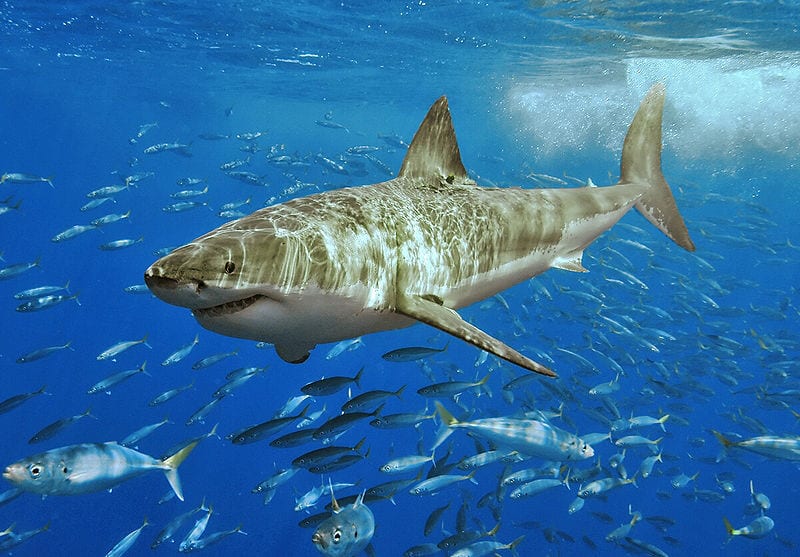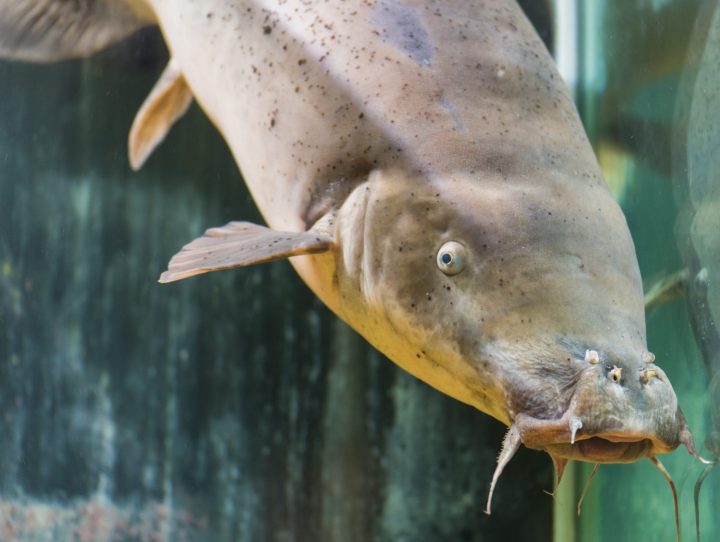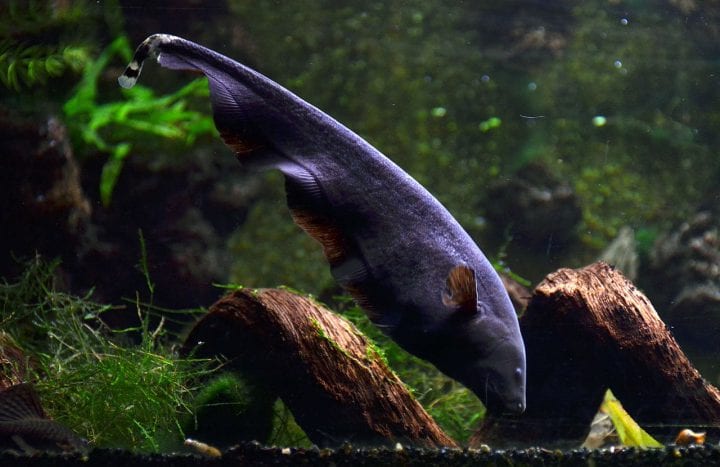Some marine animals sense bioelectric fields using gel-filled pores that electrically connect external fields to internal nerve cells.
Introduction
A great white shark cruises through coastal waters searching for prey, much as its ancestors have done for hundreds of millions of years. While it relies on sight, smell, and sound, it also has senses that humans lack.
Specifically, sharks (and other animals) have special organs called ampullae of Lorenzini that allow them to sense electric fields that other animals emit.
The Strategy
All living organisms generate electric fields around their bodies. Movement—especially when muscle and nerve fibers ignite with action—creates some electric fields. Other fields result from charged ions produced as part of normal biological processes. Fish, for example, exude bioelectric fields at their mouths and gills because mucous linings in these areas directly contact the ocean and spill ions into the surrounding water. The salty seawater itself is laden with charged ions that help spread these fields out from the fish’s bodies.
But only some organisms can sense bioelectric fields. The Elasmobranchii, a subclass of fish which includes sharks, rays, and skates, is one group of animals that possesses this sense, called “electroreception.”
Sharks have noses to smell, eyes to see, and ears to hear similar to humans and other animals. We need those organs to convert sensory signals into nerve impulses that our brains can interpret. To detect electric fields, animals with electroreception have organs called “ampullae of Lorenzini,” named for the scientist who thought their bulbous structure resembled tiny flasks called ampules.
External bioelectric fields cause negative electric charges to accumulate at the surfaces of special skin pores. Individual canals conduct the electric signal from each pore to an ampulla of Lorenzini, which contains sensing receptor cells. A gel that has conductive properties similar to that of seawater fills each canal and ampulla and works like an extension cord to electrically “connect” the pore’s surface to the receptor cells. Protons move through the gel, attracted by the external negative charge, and the receptor cells detect the accumulated charges.
The stronger the field, the more charge accumulates, and the harder the receptor cells stimulate their associated nerve fibers. In that way, the ampullae act like electrical transducers, converting the bioelectric field data into impulses sent to the brain via a network of nerves that wrap around their outsides.
Just as a sky-scraping antenna picks up more radio signals than a toothpick-sized version, biological differences affect the strength and sensitivity of a species’ electroreception. The quantity of pores and how they’re distributed on the body determine how well the brain integrates multiple signals into a complete “picture” of the external electric field. The number of pores can vary significantly; scientists found that a Port Jackson shark has fewer than 150 pores while a scalloped hammerhead has more than 3,000.
The location of pores also influences their function. Some stingrays have pores around their mouths and heads for sensing prey. Pores on their backs sense when another predator may be lurking above or behind.
Similar to tuning a radio to a particular station, electroreception can shift during different life stages to focus on particular signals.
Acute sensing of predators benefits juveniles when they are young and vulnerable. When skates and bamboo sharks are embryos still developing inside eggs, they sense the biofields of nearby predators and stop their tail movements to reduce the chances that their own electric fields will give them away as potential snacks.
Later in life, some species become more adept at sensing prey. When it’s time to mate, a surge in s appears to help male stingrays turn into true love machines, becoming divining rods that detect breeding females.
How Do Sharks and Rays Use Electricity to Find Hidden Prey? | Deep Look

The Potential
Instead of casting nets that capture everything under the sea, imagine fishing boats that could emit electric fields to attract a specific species. Such “smart” fishing could help prevent overfishing of threatened and endangered species. Underwater robots could be outfitted with localized biofield emitters to deter marine life from mining or other industrial operations without overwhelming the area’s natural biofield signals. Perhaps electoreception devices could help people “see” the world in a new way. When we look beyond what humans currently perceive in the world, the possibilities of what we can learn are positively electrifying.








